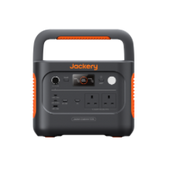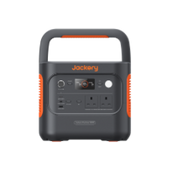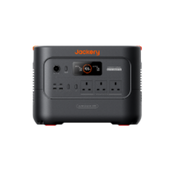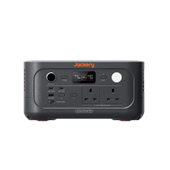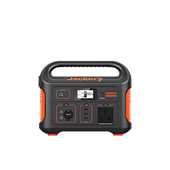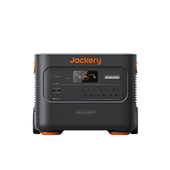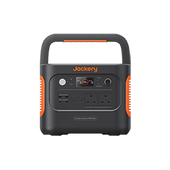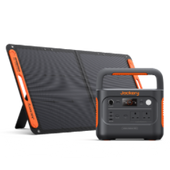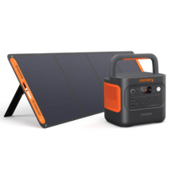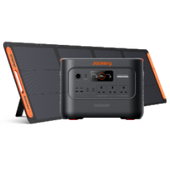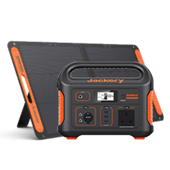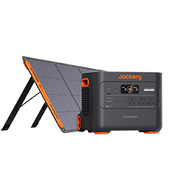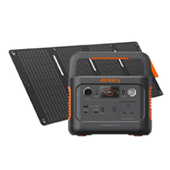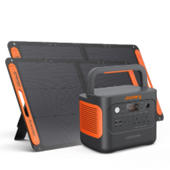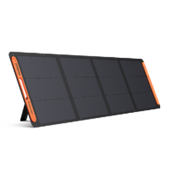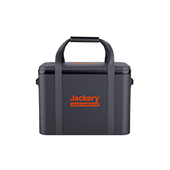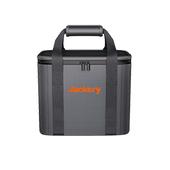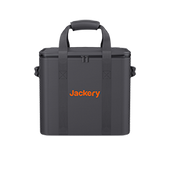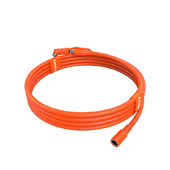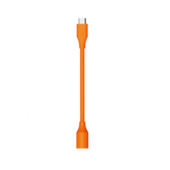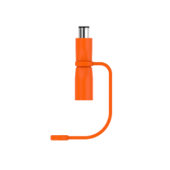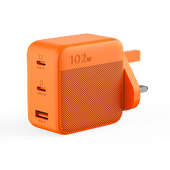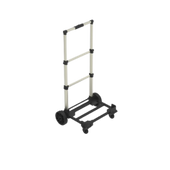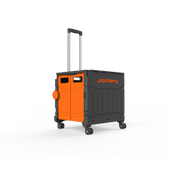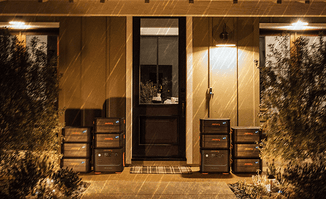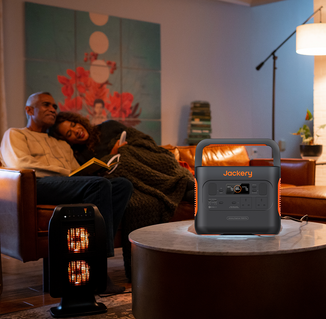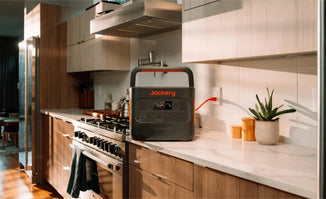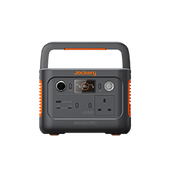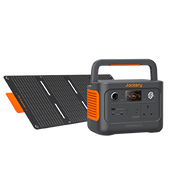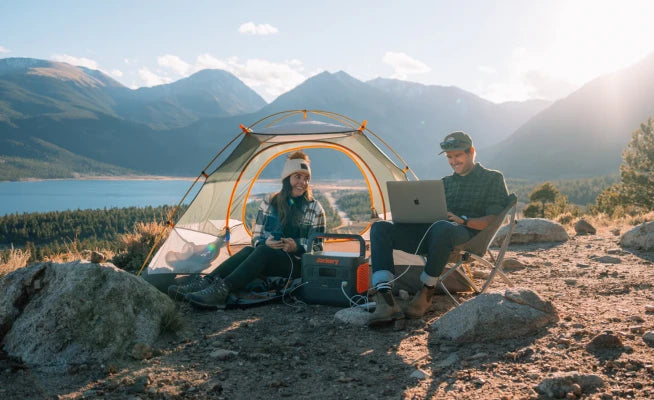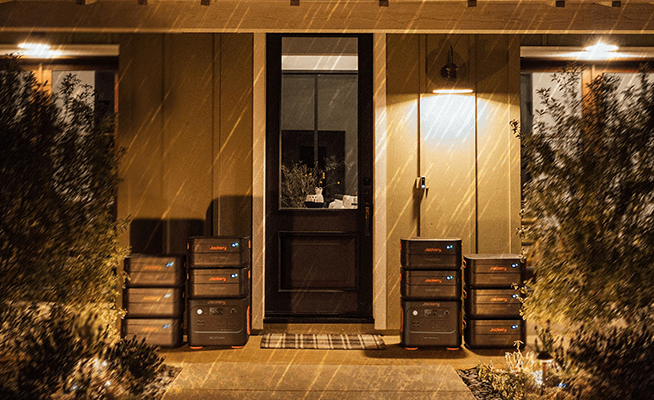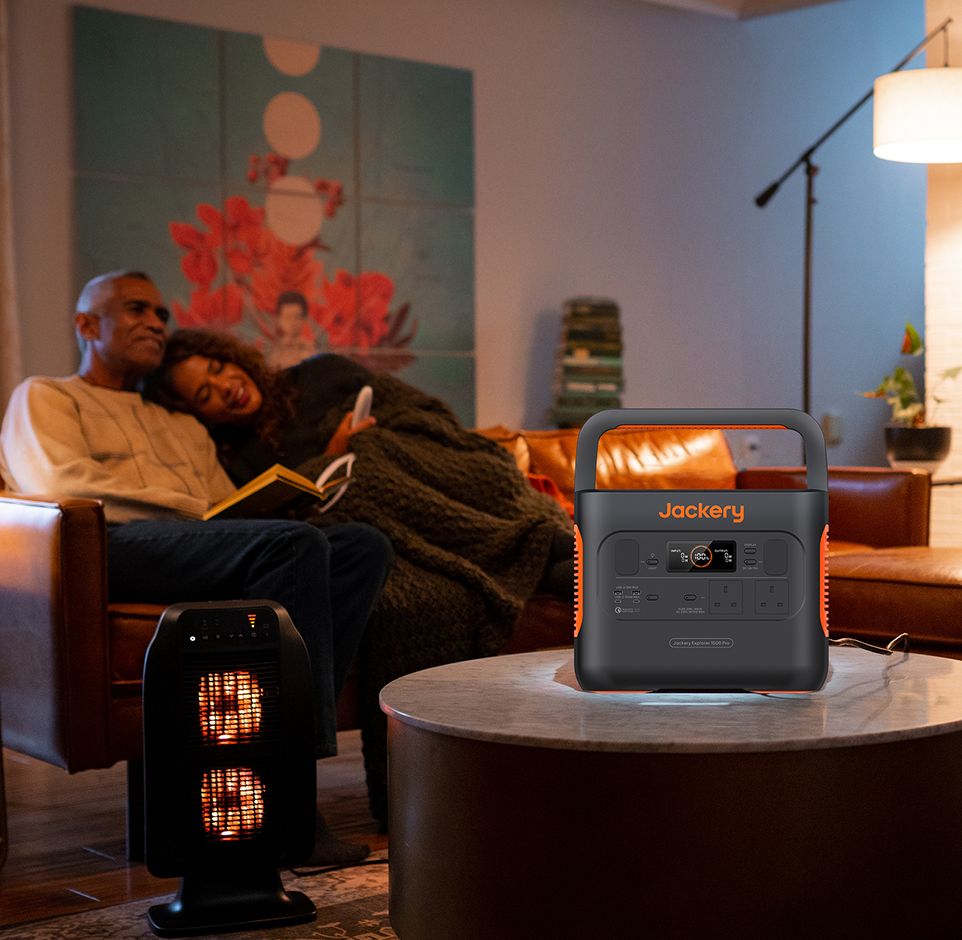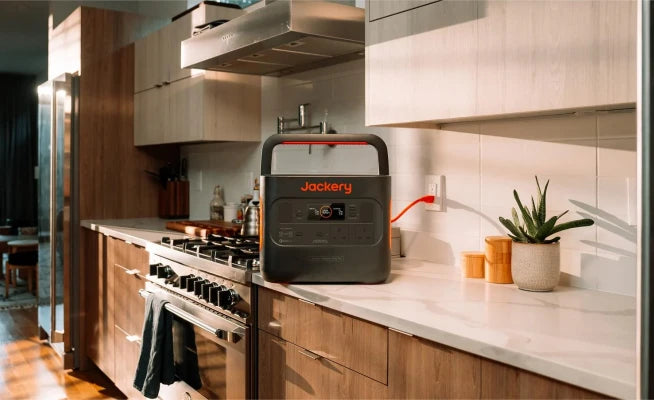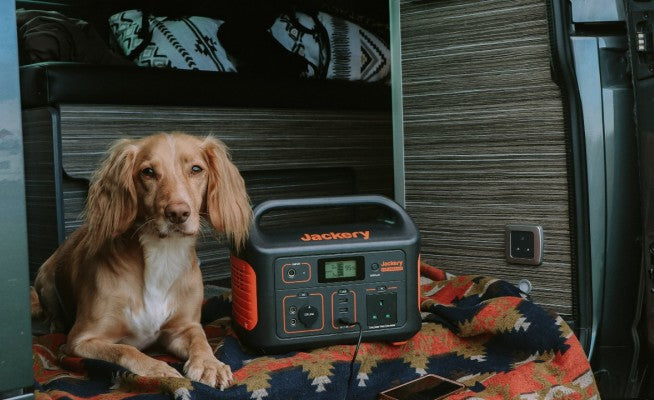Wood-burning stoves are a classic and versatile way to heat a home, making it more comfortable and inviting. Knowing how to operate a wood-burning stove properly will not only keep you warm but also help protect the environment and save you money on fuel.
This guide provides you with all the necessary information, from selecting the correct type of wood to creating your stove from sheet steel.
You'll also learn how to build and maintain a fire, control ventilation, and use and care for your stove correctly. This article will guide you on how to use your cooker safely and effectively, whether you're a beginner or looking to upgrade your current setup.
|
Key Takeaways: |
|
Why Choose a Wood Burning Stove?
Are you considering choosing a wood-burning stove? A stove can be a beautiful addition to your home, making for a cosy winter evening! However, it is crucial to understand which type of stove is suitable for your home, as well as the restrictions governing your selection.
Wood-burning stoves are an excellent choice for your home; many clients choose them as a stylish addition to their property, but they are much more than that. Stoves not only provide warmth, charm, and a comfortable atmosphere to any space, but they are also energy-efficient, helping you save money on your utility bills.
Wood Burning Stove Regulations
New laws go into effect in 2022, requiring all new wood-burning stoves to limit their carbon emissions to an agreed-upon threshold. This effectively means that older log burners can continue to function, but modern stoves must be more efficient in their operation.
All wood-burning stoves must comply with UK building regulations. There are specific details regarding the installation of the flue, the size of the hearth, and the stove's distance from combustibles. All of these factors may influence the type of stove that is most suitable for your home, which is why consulting with one of our skilled stove installers is recommended before making a purchase.
A stove must be placed on a non-combustible hearth that extends at least 225mm in front and 150mm on each side. If the hearth is situated on a combustible floor, it must be no less than 250mm thick. Furthermore, any cooker with an output of 5kW or more must have a constantly open vent. If your house is listed, the regulations for installing your cooker may be more complex.

Are Wood-Burning Stoves Bad for Your Health?
When properly maintained and operated, wood-burning stoves pose no significant health risks. Smoke from a cooker is a pollutant, and breathing in the fumes can cause coughing and shortness of breath; however, when utilised with a properly maintained chimney or flue, this should never be an issue.
Modern stoves are significantly more efficient and safer to operate than earlier types. If you have any concerns, it is always preferable to replace an outdated model with an efficient new wood burner.
What Size Wood-Burning Stove Do I Need?
Having a cooker in your home means so much more than its appearance. The most important component of picking a cooker is selecting one that is the appropriate size for your home. A cooker that is too tiny will not be able to heat the room adequately.
Buyers frequently overestimate their needs and purchase a cooker that is too large for their property. If this is the case, the wood-burning fire will generate too much heat for the space, making it feel overpowering. If you require a wood-burning stove, seek guidance on size from an experienced professional.
Will a Wood-Burning Stove Heat the Whole House?
In some instances, this may be achievable. It's critical to understand that the sort of wood burner you own will influence its performance. However, with a back boiler, a wood-burning stove can efficiently heat an entire property.
A back boiler is a system that utilises the heat from a fire to warm water, which is then used in a central heating system. This can be accomplished in various methods, ranging from a hot water tank to fully integrated heating systems that operate in conjunction with a typical boiler. Stoves can disperse heat further across the house than an open fire.
How Does a Wood Burning Stove Work?
Homes were traditionally designed around a central wood-burning stove. It was used for both cooking and heating, but modern stoves have taken on new life. Instead of enormous, cast-iron creatures gobbling up living space, current stoves are smaller and more efficient thanks to technological advancements. If you have ever wondered how a modern wood-burning stove works, now is your opportunity to find out.

Wood Stoves and Fireplaces
Wood stoves are frequently likened to fireplaces, and while the use of wood and the flue may be similar, they are very different things. Fireplaces are notoriously draughty and inefficient in houses. Heat escapes out via the flue and throughout the fireplace, making it difficult to concentrate the heat in a single spot for efficient heating.
With a wood stove, the gaskets and tight-fitting nature allow heat to be concentrated within the stove and radiate from the unit. A modern wood stove can heat a larger home much more efficiently than a fireplace.
Ventilation Requirements
The fundamental reason a wood stove works so well is due to the way the device uses air. The air control valve's ventilation holes feed the firebox with the oxygen required to maintain a high blaze. Flame control is enabled by opening and closing the shaft's openings. When the holes are completely open, the unit operates at maximum capacity; when the holes are closed, the unit operates with a lesser flame. This cannot be performed using other means of heating, such as fireplaces.
The Significance Of Materials
Not all materials carry heat efficiently. Heaters and wood stoves have been manufactured of several metals over the years, but one that has stood out the most is reliable cast iron. Iron possesses several qualities that make it an excellent choice for use in any wood-burning furnace. It is convenient, inexpensive to use, an abundant metal, and lasts for many years; thus, constructing a stove from cast iron means that the owner needs to invest in the initial purchase of the furnace, with annual follow-up inspections throughout the unit's life.
Outflow
Contemporary wood stoves operate simply by allowing air to flow into the firebox, allowing the flame to rise to the required temperature. Holding in heat is critical, but surplus heat must have a way to escape so that an excess of pressure does not build up within the unit.
A contemporary wood stove, like a traditional fireplace, has a vent that allows smoke and surplus heat to escape from the device. Some wood burners are installed in existing fireplaces to increase efficiency, and older chimneys require the insertion of an inner flue tube.
Stand-alone units can have the flue exit from the top or back, but regardless of the type, appropriate cleaning is always required. To clean the flue, use a specialised chimney sweeping brush or hire a professional cleaning service.
How To Build and Use a Wood Burning Stove?
With the correct equipment and planning, creating a functional wood-burning stove from sheet steel is surprisingly easy. You can make a small burner that heats a small space or serves as a sturdy hob by bending and welding steel panels together. The guide's method utilises standard workshop tools and straightforward steps, making it a suitable DIY project for anyone familiar with working with metal.

Materials Needed:
Sheet of mild steel (3-6 mm thick)
4'' mild steel flue pipe ( 2 mm wall thickness)
Steel to fabricate legs
Fire-rope and adhesive
Sheet-metal fasteners
Hot-resistant paint
Wire mesh or steel grate material
Tools Required:
Angle grinder with cutting and grinding discs
Quality jigsaw with robust blades
Large flat and round files, plus emery paper for finishing edges
Welding equipment for seams, top, and flue components
Drill for hinge tabs, vents, and bolt holes
Blow torch (optional) for aiding metal bending
Jackery Portable Power Station (optional) for powering outdoor electric tools.
Step 1: Cut and Mark the Steel Parts
Mark the shapes you need on a 4 mm sheet of mild steel. These shapes comprise the front, back, sides, top, bottom and door of the stove. You can use an angle grinder or a jigsaw with metal-cutting blades to make the cuts. Use files and emery paper to smooth off all the cut edges. This will keep you safe and make sure the pieces fit together correctly when you weld them.
Step 2: Make the Vent Hole in the Top Panel
To fit a 4" flue pipe, cut a round hole in the top panel with a hole saw or grinder. Ensure the edges are clean and smooth so that the pipe fits snugly and can be welded securely. The pipe will be the stove's chimney outlet.
Step 3: Weld the Body of the Stove
Align the cut panels and tack-weld them together to make the stove body. Start by assembling the base and side panels. Then, add the back and top. After ensuring everything is square, solder all the seams together to create a firebox that is both airtight and strong.
Step 4: Put on the Legs
To create four sturdy legs, use steel parts such as tubes or chair legs that are readily available. To make the stove higher and more stable, it should be bolted or welded to the bottom. The legs should be positioned so that the cooker sits level and remains stable during use.
Step 5: Cut and Get Ready the Door Opening
Mark and cut a rectangle into the front of the stove. Keep the cut part to use as the door for the stove. Later, this panel will have hinges and a latch installed on it. To ensure the door works smoothly, clean all edges thoroughly.
Step 6: Put in the Internal Grate
Make a simple grate out of steel mesh or bars to hold the fuel above the stove's base. This allows air to flow under the fire, which enhances its burning and makes cleanup of the ash easier. The grate should fit snugly inside the stove body but be easily removable for cleaning.
How to Use a Wood Burning Stove?
To use a wood-burning stove effectively, several measures must be taken. You must use your cooker safely and efficiently; these tips will help you do so:

Step 1: Prepare your stove by ensuring that the fire has had a previous air supply. Some models may include an indicator to notify you.
Step 2: Make a fire bed by placing your firelighters, paper, and dry kindling wood on it. To start a successful fire, you'll need a lot of kindling. Don't think you can do without it.
Step 3: When lighting a fire, wait for the kindling to catch fire before allowing it to burn. It is crucial to have a log guard since this will keep all the burning fuel inside and away from the glass.
Step 4: Leaving the door slightly open is a simple but important detail. Leaving the door somewhat open increases the draft and allows you to kindle the fire. Furthermore, it prevents condensation from forming on the front of the glass. In other circumstances, however, it is preferable to close the door because this lowers the quantity of airflow and speeds up the air that does come through, which can help start the fire.
Step 5: Add larger pieces progressively.When the kindling starts to burn well, add larger pieces of split wood. However, do not add entire logs immediately; you need to gradually build up the fire and ensure that you do not smother it.
Step 6: Monitor air flow. Most wood burners offer various airflow adjustment options. Once the fire is established, you can limit the amount of airflow to prevent the wood from burning too quickly; it is crucial only to slow the airflow once the fire is well-established. As the fire heats up and becomes more established, you can reduce the airflow to ensure that the wood burns slowly and efficiently. Slowing the air down too quickly could extinguish the fire, so keep a close eye on it.
Common Firewoods for Wood-Burning Stoves
Although it is a more efficient fuel source, hardwood can be challenging to ignite when cold. Softwood kindling is therefore the ideal way to start a fire, as its resinous and fibrous character allows it to burn in cold weather.
Once a fire has been started and some heat is generated in the base, it should be fueled with hardwood to keep it burning slowly and producing a lot of heat.
Softwood can produce a charming flame to look at, but it burns quickly, consuming a substantial amount of wood in a short period.
Before burning, make sure that all the wood is well-seasoned. Different woods have varying initial water content, which is often influenced by the location where a tree grows. Willow, for example, likes to grow in damp soils or near water sources; therefore, the wood from this tree is high in water content and requires more seasoning.
For optimal combustion, firewood should have a moisture level of 30% or less. The density of the wood also affects how long it should be seasoned. Oak is a thick wood that takes up to two years to season properly.
WoodBurning Characteristics
|
Common Name |
Hardwood/Softwood |
Comments |
Grade |
|
Alder |
Hardwood |
Burns quickly and gives off little heat. |
Poor |
|
Apple |
Hardwood |
Needs seasoning; burns slowly with good heat and pleasant aroma, minimal sparking. |
Good |
|
Ash |
Hardwood |
High-quality firewood; low moisture when green, with a good flame and slow burn. |
High |
|
Beech |
Hardwood |
Requires long seasoning; burns well but tends to spark. |
Good |
|
Birch |
Hardwood |
Burns easily, can be unseasoned; burns quickly—best mixed with slower wood. Bark is excellent for kindling. |
Good–High |
|
Blackthorn |
Hardwood |
Burns slowly with good heat and little smoke. |
Good |
|
Cedar |
Softwood |
Pleasant scent, lasting heat, minimal spitting; small pieces can be unseasoned. |
Low |
|
Cherry |
Hardwood |
Season well; burns well with pleasant aroma, no spitting. |
Low–Good |
|
Douglas Fir |
Softwood |
Low flame production and heat output. |
Poor |
|
Elder |
Hardwood |
Burns quickly with minimal heat output, producing a significant amount of smoke. |
Poor |
|
Elm |
Hardwood |
Good firewood; needs seasoning; gives lasting heat and slow burn. |
Low–Good |
|
Hawthorn |
Hardwood |
Burns well with sound heat output and minimal smoke; however, it is challenging to split. |
Good–High |
|
Hazel |
Hardwood |
Excellent firewood; burns quickly without spitting. |
High |
|
Holly |
Hardwood |
Can be burned green; solid firewood. |
Good |
|
Hornbeam |
Hardwood |
Burns well; reliable firewood. |
Good |
|
Horse Chestnut |
Hardwood |
Low quality; tends to spit. |
Low |
|
Larch |
Softwood |
Needs long seasoning; spits and produces soot buildup. |
Poor |
|
Lime |
Hardwood |
Low-quality firewood. |
Low |
|
Oak |
Hardwood |
Among the best, it requires long seasoning, producing a slow and long-lasting burn, making it ideal for smaller logs in smaller stoves. |
High |
|
Pear |
Hardwood |
Season well; burns pleasantly without spitting. |
Good |
|
Pine |
Softwood |
Burns well but spits; resinous—good for kindling; may leave soot. |
Low |
|
Plane |
Hardwood |
Usable firewood with moderate qualities. |
Good |
|
Poplar |
Softwood |
Burns slowly but produces choking black smoke even when seasoned. |
Poor |
|
Rowan |
Hardwood |
Good, reliable firewood. |
Good |
|
Spruce |
Softwood |
Low quality. |
Low |
|
Sweet Chestnut |
Hardwood |
Seasoned burns; spits excessively—sparks can fly. |
Poor–Low |
|
Sycamore |
Hardwood |
Burns well with moderate heat output. |
Good |
|
Walnut |
Hardwood |
Low-quality firewood. |
Low |
|
Willow |
Hardwood |
High moisture content; requires thorough seasoning. |
Low |
|
Yew |
Hardwood |
Usable firewood. |
Low–Good |
(Data Source: South Yorkshire Wood)
Six Tips for Using a Wood-Burning Stove
By following the six rules, you can reduce pollutants from wood burning while getting more heat out of each log.

Tip 1: Do Not Be Satisfied With Outmoded Technology
Replace your outdated wood-burning stove or fireplace insert (purchased before 1998) with a clean-burning model. The emissions from an ancient stove or insert will be too high due to outdated combustion theory, even with the best combustible material and the most cautious operator.
Today's clean-burning stoves are also far superior to those from more than a decade ago, thanks to ongoing research and technology development, resulting in an additional 50-80% reduction in unburnt component emissions and higher energy efficiency.
If you use your open fireplace for anything other than ambience a few times a year, consider installing a fireplace insert. Open fireplaces provide little heat to the home (often causing a net loss) and emit a lot of smoke. Antique wood stoves (from before 1940) are sometimes attractive to look at and worth preserving, but they should be kept on display rather than used.
Tip 2: Consider Heat Needs, Residence Type, And Chimney
When purchasing a new cooker, ensure that it meets your heating requirements (measured in kW) as well as your home's specifications, including the chimney. The chimney's properties (height, cross-section, insulation, and airtightness) are all significant, as they govern the amount of draft generated to supply air to your stove.
When you light a fire in your stove, the chimney creates a draft, as does the temperature and thus density differential between the inside air and the outside air; as you are undoubtedly aware, hot air rises. The draft improves as the temperature difference between the exhaust smoke and the outside air increases.
To further control the draft, alter the aperture of the stove's air vent. The operator's adjustment of this air vent is consequently critical, particularly immediately after ignition and during the subsequent interval. An open fireplace lacks an air vent and gradually absorbs significantly more air than is required, reducing energy efficiency and causing excessive emissions.
Tip 3: Do Not Use Any Combustibles Other Than Firewood
Wood-burning stoves are designed and tuned to burn firewood. Other forms of combustibles can pose considerable issues for managing the combustion process, resulting in greater emissions at best and a chimney fire at worst.
Different types of firewood have distinct qualities. Hardwoods, such as birch, have a higher density than softer (more porous) woods, like spruce. The energy density of hard firewood is proportionally greater. It follows that the amount of timber utilised must be lowered. Bark differs in composition from the wood it protects and emits more specific chemicals. Avoid introducing too many thin logs with a lot of bark into the stove at once.
Paraffin firelighter logs should also be avoided in wood-burning stoves because the paraffin in them can melt and enter the air-regulating mechanism. Paraffin is also a fossil fuel; therefore, its combustion adds to global warming. Wood briquettes, for example, are compressed combustibles, not logs. They have entirely different physical qualities from actual firewood logs, and wood-burning stoves are not designed or type-approved for them.
Tip 4: Light Up in an Efficient and Environmentally Beneficial Manner
When lighting, arrange the logs horizontally, preferably in two layers, so that they do not touch the oven walls or the glass window. Also, ensure that the air intake is not clogged. The most extensive logs should be placed at the bottom, and the smallest at the top.
At the very top, pile some wood chips or birch bark to create a fire. Alternatively, you might utilise fire starters. Avoid newspapers. When everything is ready, ignite the fire from the top. This prevents the entire log pile from catching fire simultaneously.
Instead, only the top part will burn at first, producing a little flame with a sufficiently high local temperature to ensure a good start to the combustion process. The fire will progressively move downward, activating the bottom layer of wood.
If you ignite the entire wood pile at once, it will take significantly longer to reach the required temperatures for clean combustion, and the emissions will be higher.
Tip 5: Adjust The Air Supply When You Light Up
Adjusting the air supply upon lighting is critical, as the stove is initially cold and the draft is limited. When you fire the stove, leave the door slightly open until a good flame forms at the top of your log pile. Turn off the stove hood and bathroom fan.
When you close the cooker door, the air supply is redirected to the air vents, which should be open to their full capacity for a short period to provide a sufficient supply. After a few minutes, the draft in the chimney is adequate, and you can control the air supply by reducing the air vent aperture.
At this time, you should offer less primary air and more secondary air. If you fail to manage your air supply, you will burn more wood than necessary, which in turn raises the temperature inside your chimney.
A high temperature inside the chimney results in higher heat loss (you are effectively "warming the outdoors"), which is uneconomic. In the worst-case scenario, it can even cause a chimney fire if the temperature rises to extremely high levels and a significant accumulation of residue occurs in the chimney.

Tip 6: Don't Shut Off The Air Supply Entirely
It is not necessary to adjust the air supply after the stove has heated up, as long as small amounts of wood are added regularly to maintain combustion. The wood stove will achieve thermal equilibrium with its surroundings, and as long as its heating impact (measured in kW) is adequate for your home, you will not need to touch the air vents.
Reduce the amount of wood added at a time and increase the interval between wood insertions if the room gets too hot. If you set a log on embers that are glowing, it will ignite quickly.
It is not a good idea to entirely shut down the air supply. Without a suitable air supply, volatile compound emissions rise. It is not advisable to insert large amounts of wood and close the air supply in the intention of achieving a long-lasting blaze.
Jackery Portable Power Station for Woodworking
A Jackery Portable Power Station, especially a larger model like the Explorer 2000 Plus, can be an invaluable asset for woodworking, particularly when tackling a project like building a wood-burning stove.
A Jackery can provide the necessary AC power for power tools, such as circular saws, drills, jigsaws, and more, especially when working outdoors or in a workshop without readily available wall outlets. While cordless drills are standard, if you're using heavier-duty corded drills for extended periods, a Jackery is perfect.
A significant advantage is the ability to work on your wood stove project in locations without grid power – outdoors, in a detached shed, a remote cabin, or even a temporary workspace in your yard.
Jackery Explorer 2000 Plus
The Jackery Explorer 2000 Plus is an excellent choice for woodworking, especially when you're building something as substantial as a wood-burning stove.

High Output (3000W Continuous, 6000W Peak): This is the most crucial factor. Building a wood-burning stove often involves working with both metal and wood, requiring tools that demand significant power. The 2000 Plus is designed to be expandable with additional battery packs. Suppose your woodworking projects grow, or you start building multiple stoves. In that case, you can add more battery capacity (up to 12kWh with five expansion packs) to meet higher demands.
Large Capacity (2042Wh): Building a wood-burning stove is not a quick task. This substantial capacity allows you to run your tools for extended periods without needing to recharge constantly. The pure sine wave inverter inside provides clean, stable electricity, preventing damage to sensitive electronics within your tools and ensuring they operate at peak efficiency.
No Mains Power Required: If you're building the stove in a workshop without readily available power, a shed, a garage, or even outdoors on your property, the Jackery 2000 Plus provides true independence. You don't need to run long, potentially hazardous extension cords or rely on a noisy, fume-emitting generator.
Silent Operation: Woodworking can be noisy enough with saws and grinders. The Jackery operates silently, reducing overall noise pollution in your workspace and making it a more pleasant environment.
No Fumes or Exhaust: Crucial for indoor woodworking, especially in a garage or shed. Gas generators produce carbon monoxide, which is extremely dangerous in enclosed spaces. The Jackery produces zero emissions, making it safe for indoor use.
|
Jackery Explorer 2000 Plus Running Time |
|
|
Angle Grinder (1000W) |
1.6-4H |
|
MIG Welder (1400W) |
1.2-2.9H |
|
Circular Saw (1100W) |
1.5-3.6H |
|
Drill (800W) |
2-5H |
|
Dust Extractor (1200W) |
1.4-3.3H |
(*The working hours are only for reference; the actual working hours depend on your usage.)
Jackery Explorer 2000 v2
The Jackery Explorer 2000 v2 is an excellent choice for woodworking projects, especially something as involved as building a wood-burning stove, because it provides a significant leap in power and capabilities compared to smaller portable power stations.

2200W Continuous Power (4400W Surge Peak): This is the key differentiator. Many woodworking tools, especially those like circular saws, mitre saws, table saws (smaller ones), routers, and angle grinders, have high starting (surge) wattages and require substantial continuous power.
The Explorer 2000 v2's 2200W continuous output ensures it can handle the steady operation of most common corded power tools without tripping or struggling. The 4400W surge capability is crucial for those initial power spikes when tools like saws spin up.
2042Wh (Watt-hour) Capacity: Building a wood-burning stove involves many hours of cutting, grinding, drilling, and shaping. A 2042Wh capacity means you can power your tools for significantly longer periods before needing a recharge. This is vital for maintaining momentum on a project and avoiding frequent interruptions to wait for power to be restored.
LiFePO4 Battery with 4000+ Cycles: The use of LiFePO4 chemistry means exceptional durability and longevity. With 4000 charge cycles to 70%+ capacity, this battery is built to last for many years of heavy-duty woodworking use, making it a sound long-term investment.
Relatively Lightweight for its Capacity: Weighing around 38.6 lbs (17.5 kg), the Explorer 2000 v2 is remarkably light for a 2kWh power station. This makes it manageable to move around your workshop, garage, or even outdoors to work on different components of the stove.
|
Jackery Explorer 2000 v2 Running Time |
|
|
Angle Grinder (1000W) |
1.6H |
|
MIG Welder (1400W) |
1.2H |
|
Circular Saw (1100W) |
1.5H |
|
Drill (800W) |
2H |
|
Dust Extractor (1200W) |
1.4H |
(*The working hours are only for reference; the actual working hours depend on your usage.)
FAQs
The following are the frequently asked questions about the wood-burning stove:
1. How to use a wood-burning stove for beginners?
To use a wood-burning stove safely and effectively, first prepare it by placing dry wood and kindling inside. Then, light the fire and adjust the air controls to maintain the fire's intensity. Always ensure there is sufficient airflow and follow safety guidelines, such as inspecting the fuel and using a fireguard.
2. What vents should be open on a wood burner?
Most wood-burning and multi-fuel stoves include both a bottom and top air vent. Wood burns best when a good bed of ash is placed down in the bottom of the stove and air is supplied from above. When you light your stove, ensure both air vents are fully open.
3. How do you control a wood-burning stove?
Wood burns best when exposed to oxygen from above; therefore, the air vents located at the top of your stove will be most effective in managing your fire. Controllable air vents typically feature a handle that allows you to open and close the vent with ease.
4. Should the damper be open or closed on a wood burner?
This can allow smoke and harmful chemicals, such as carbon monoxide, to back up into your house, posing significant health concerns. How to Avoid It: When a fire is active, leave the damper fully open, regardless of its size. This provides adequate ventilation, allowing smoke and gases to exit through the chimney.
Final Thoughts
Learning how to work a wood-burning stove effectively can make your home significantly more energy efficient, lower your heating costs, and keep you toasty all winter long. Choosing the right materials and types of wood, as well as building and maintaining your stove correctly, all contribute to making heating safer, cleaner, and more effective.
You can maximise the benefits of every log and reduce emissions by utilising modern technology, ensuring sufficient airflow, and adhering to safe burning procedures. A wood-burning stove may be more than just a means to heat your home if you use it responsibly and maintain it in good condition. It can also be a way to live a more sustainable life.



